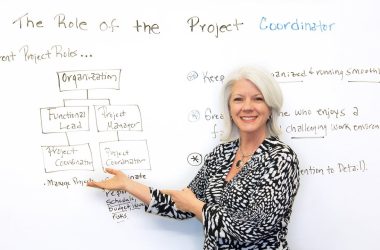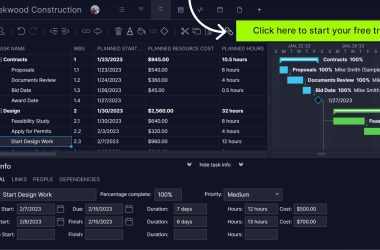Executive Summary
As project complexity grows, PMOs are struggling to build and maintain capable teams that can adapt and deliver. This blog outlines a practical, budget-friendly approach to upskilling your existing project managers using competency frameworks, lightweight assessments, and engaging development programs. From mapping team strengths to proving business impact, Kolme Group shares actionable strategies to help PMO leaders close the talent gap and build a future-ready project team.
Bridging the PM Talent Gap: A Practical Guide for Modern PMOs
Let’s face it: finding—and keeping—great project managers is tough. As project complexity grows and delivery models shift, PMOs are being asked to do more with less… and do it faster, better, and smarter. Yet too often, PMOs are running with skeleton crews, over-relying on a handful of seasoned pros, while newer team members are left to “figure it out as they go.”
If this sounds familiar, you’re not alone. One of the most common concerns we hear from PMO Leaders is the growing talent gap—not just in headcount, but in skills, confidence, and adaptability. The good news? There are practical steps you can take to build a capable, future-ready PM team—without blowing up your budget or slowing delivery.
Let’s walk through what that looks like in real life.
The Talent Gap: It’s Not Just About Headcount
Hiring more PMs isn’t always the answer. Often, it’s about building the right capabilities within your existing team—and aligning those capabilities with your organization’s evolving needs.
Maybe you’ve got:
- PMs with strong technical skills, but weak stakeholder engagement.
- Team members who know agile terms but struggle with hybrid delivery.
- Rising stars who lack confidence in risk management or financial forecasting.
Sound familiar? The challenge isn’t that you have the wrong people—it’s that you need the right development path to help each PM level up where it matters most.
Step 1: Define What “Good” Looks Like (AKA a Competency Framework)
Before we can grow talent, we need to define it.
A Project Management Competency Framework doesn’t have to be complicated. At its core, it’s a roadmap that outlines:
- Core competencies every PM should have (e.g., schedule management, communication, risk analysis)
- Behavioral skills like leadership, collaboration, and adaptability
- Business knowledge that’s specific to your industry or organization
Start small—maybe just a 3-level scale (Beginner / Proficient / Advanced) with example behaviors. It gives you and your team a shared language for growth, coaching, and performance feedback.
💡 Pro Tip: Involve your team in building the framework. They’ll be more invested and it’ll feel less like a top-down mandate.
Step 2: Map Your Team’s Strengths and Gaps
Once you have a framework, it’s time to assess your current team.
This doesn’t mean annual performance reviews. We’re talking about a lightweight skills matrix—a quick self-assessment and manager review to identify areas of strength, skill gaps, and learning opportunities.
You might discover:
- Susan is great at executive communication, but avoids conflict resolution
- Raj is rock-solid in Jira, but struggles with portfolio-level visibility
- Your team, overall, lacks confidence in benefits realization or financials
This kind of insight is gold—it lets you tailor development plans to real needs, not generic training catalogs.
Step 3: Build a Development Program That Actually Works
Here’s the thing: most corporate training fails because it’s too long, too generic, and not connected to day-to-day work.
The key is to make learning:
- Relevant (tied to real-world projects and current challenges)
- Bite-sized (micro-learning or monthly PM roundtables work wonders)
- Social (peer mentoring, lunch & learns, or internal “PM shadowing”)
You don’t need a big budget to start. Some of our favorite low-cost wins include:
- Creating an internal “PM Playbook” with real examples from your org
- Offering quarterly PM certifications or badges aligned to your framework
- Rotating facilitation of a PM Community of Practice
And don’t forget—training doesn’t stop with new hires. The PM landscape is evolving fast. Even your senior PMs can benefit from refreshers on AI, strategic planning, or navigating hybrid delivery models.
Step 4: Show the Value to the Business
Want lasting support from leadership? Show them how your talent strategy ties back to project outcomes and business value.
Examples:
- “We reduced onboarding time for new PMs by 40%.”
- “Customer satisfaction with PM communication improved 20%.”
- “We closed 3 more projects on time this quarter after skill-building on risk mitigation.”
When you connect the dots between PM capability and business impact, you make the case for continued investment in your team—and your PMO’s credibility goes up.
Final Thought: Talent Development is a Journey, Not a Sprint
There’s no magic switch for closing the PM talent gap. But with a clear framework, practical tools, and a culture that values learning, your PMO can become a talent engine—one that builds the confidence, skills, and leadership your organization needs to thrive.
It starts with one conversation. One framework. One learning initiative.
You’ve got this. And if you’d like a partner to help bring your vision to life, we’re here to support you. Click here + let’s chat!
Prefer to email us? Reach out to Kolme Group at ppmanswers@kolmegroup.com to talk through your PMO challenges—we’re always happy to help.
The post Closing the PM Skill Gap — A Real-World Guide for PMO Leaders appeared first on Kolme Group.





